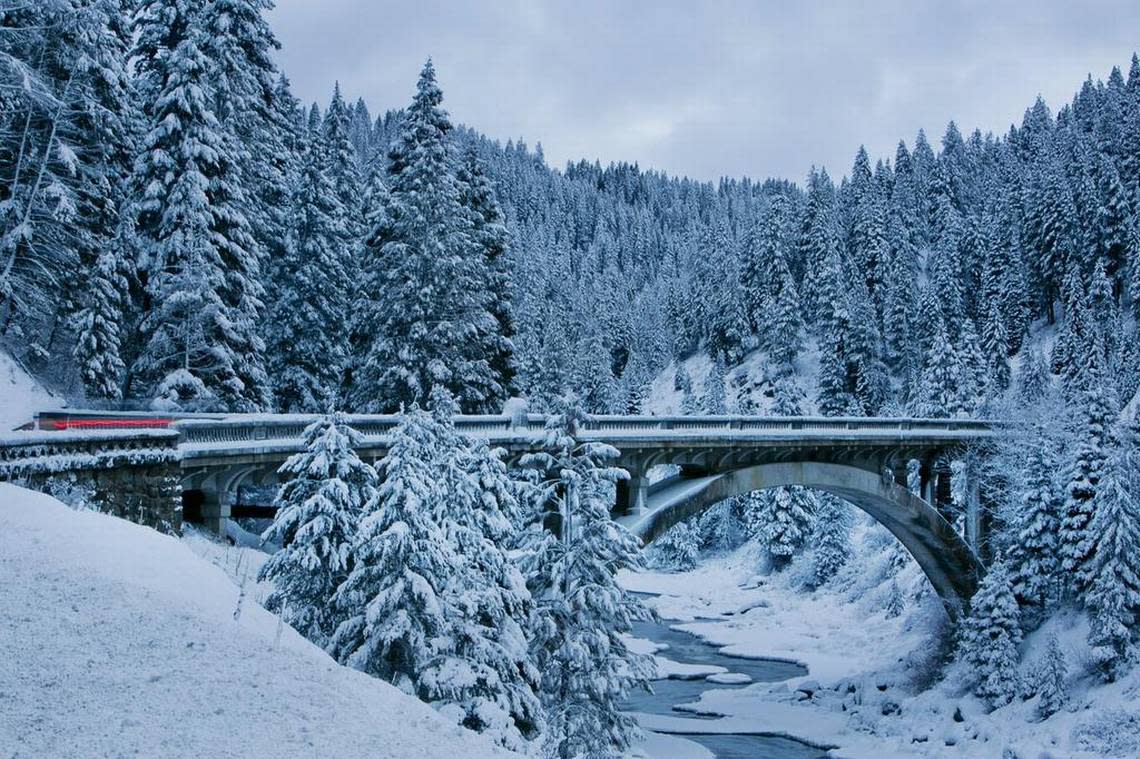Did you feel the magnitude 4.9 earthquake that shook Idaho on Monday? Here’s what we know
A magnitude 4.9 earthquake shook Idaho residents Monday morning, with impacts felt in Boise and around the Treasure Valley.
The quake, which the U.S. Geological Survey said occurred at 10:25 a.m., was the largest in Idaho since a magnitude 6.5 quake occurred in March 2020. The agency said Monday’s quake originated near Smiths Ferry, about 50 miles south of McCall.
A second earthquake, measuring a 2.7 magnitude strength, was recorded about a mile from the site of the original quake at 10:46 a.m.
The Valley County Sheriff’s Office said at about 11:20 a.m. that it had not received any reports of injuries or damage from the quakes. The Idaho Transportation Department said in a news release that it’s assessing possible infrastructure damage in the area, though small rockfall on Idaho 55 was the only immediate issue.

The first quake took geological experts by surprise, Idaho Geological Survey director Claudio Berti told the Idaho Statesman. USGS data shows no other quakes in the area in recent weeks, though a magnitude 1.9 temblor was recorded closer to McCall last week.
“There are no signs that can be detected that give away the coming of a strong earthquake,” Berti told the Statesman. “Occasionally, the strong earthquake can actually be the announcement of an even larger earthquake; we call them foreshock rather than aftershock.
“But nonetheless, we have no way to predict whether this is a foreshock of a larger event or is just an earthquake that just happened,” he said.
Based on previous earthquakes in the Smiths Ferry region, Berti said several aftershocks may be possible, such as the 2.7 magnitude tremor that occurred about 20 minutes after the original. Berti noted that aftershocks following a large earthquake are typical, and Idaho residents shouldn’t be alarmed. Some of the smaller aftershocks may not even be felt.
Officials asked Idaho residents to report their experiences online at earthquake.usgs.gov to help researchers better understand the earthquake.
How strong is a 4.9 magnitude earthquake?
Earthquakes are measured on a scale from 0 to 10 called the Moment Magnitude Scale.
Earthquakes that measure 2.5 or less are usually not felt on the surface but can be detected by seismology equipment. A quake that measures 8.0 or stronger can destroy a community.
Monday’s 4.9 magnitude Smiths Ferry quake sits on the cusp between being a light or moderate earthquake. Damage is possible, but it can be avoided.
Monday’s tremor didn’t come close to the strongest Gem State quake on record. That honor belongs to the 6.9 magnitude earthquake near Challis in 1983, followed by the 6.5 magnitude quake near Stanley in March 2020.
Why did this earthquake occur?
The Smiths Ferry region is a known seismic area. Because of that, the Idaho Geological Survey maintains a seismic station with equipment in the region.
The area is particularly active because younger fault lines have formed in the valley between McCall and Smiths Ferry, according to Berti. Fault lines may have resulted in Monday’s quake.
“Some of those (younger) faults are reactivating old fractures that have been there for a long history,” Berti said.
Series of small quakes quiver beneath Yellowstone Lake. The area gets thousands a year
Earthquake shakes Boise on Saturday night. Here’s how it compares to our recent quakes
More than 100 earthquakes strike near Oregon volcano in a single day, geologists say
